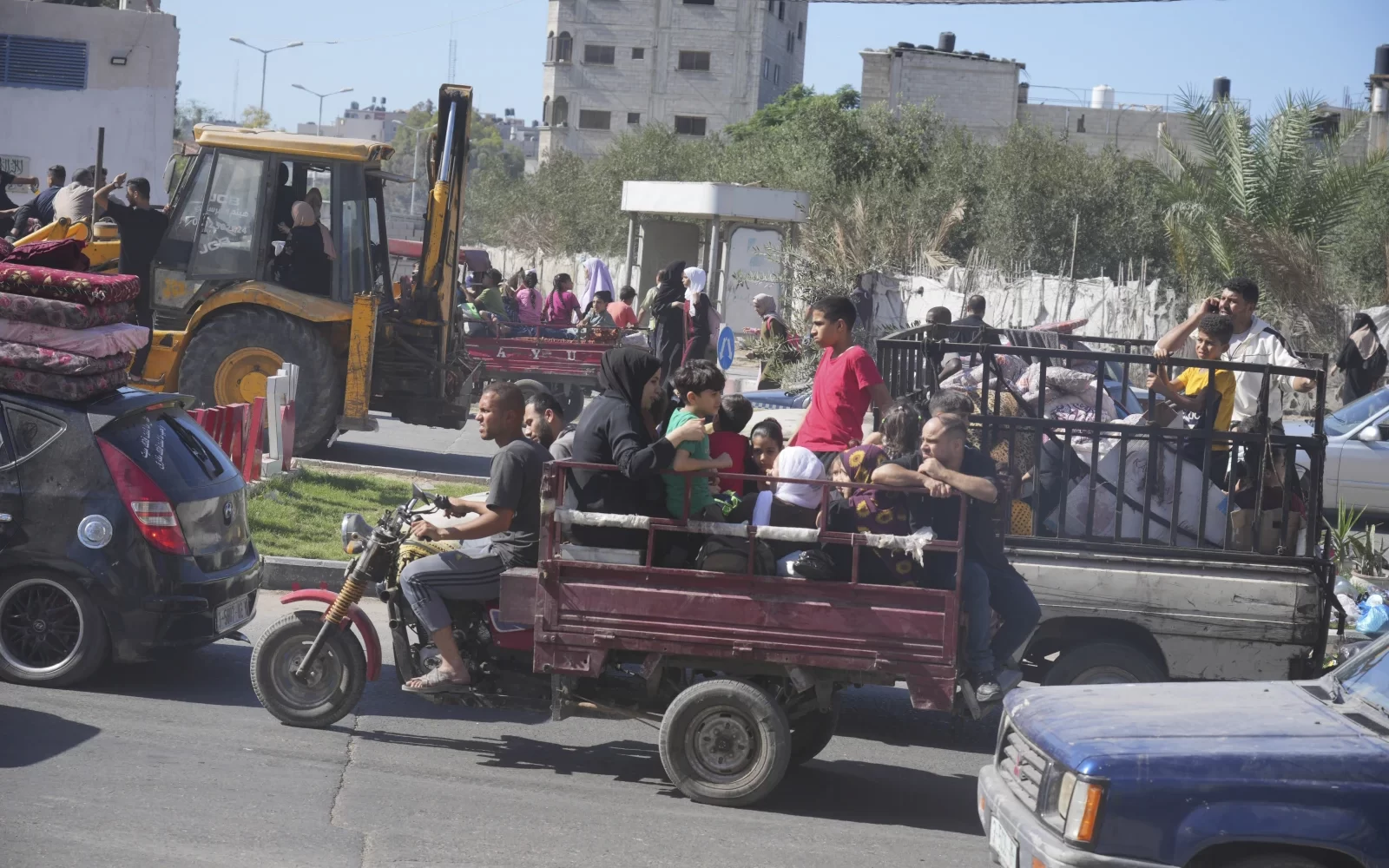The Gaza hostage deal represents a rare moment of humanity in a savage conflict that has inflicted unfathomable violence on both Israeli and Palestinian civilians.

A sign illuminates a square in Tel Aviv on November 21, 2023, calling for the release of Israelis held hostage since the October 7 attack by Hamas.Ahmad Gharabli/AFP/Getty ImagesCNN —
For the child and female hostages expected to be released during a pause in the fighting and their families, it represents everything — a chance of life seven weeks after a Hamas terror attack on Israeli soil slaughtered 1,200 people.
There were growing hopes, for example, on Tuesday night that American Avigail Idan, who turns four on Friday and whose mother and father were murdered in the attacks on October 7, could be among the first released.
“I am very hopeful, our family is hopeful, it’s been 45 days since (Avigail) was abducted and taken to Gaza,” her great aunt Elizabeth Hirsh Naftali told CNN’s Pamela Brown. “It’s excruciating. For our family, we have spent the last seven weeks – seven weeks – worrying, wondering, praying, hoping.”
The hours to come will be agonizing for loved ones waiting for their relatives – and even more so for those whose family members are not on the list to be freed in this preliminary arrangement. Much remains uncertain, including when the pause will start, how and when hostages will start to emerge and if the agreement will last.
The complex agreement was brokered by Qatar, which served as an intermediary between Hamas and Israel in exhaustive negotiations with the close involvement of the United States, and was endorsed by the Israeli cabinet early Wednesday local time.
It will likely require similar attention from all involved to implement in a vicious war zone and it will be at risk of unravelling at any moment. This is because of a vacuum of trust between two bitter enemies and the extreme logistical challenges of extracting hostages from a territory that waited weeks for the arrival of a few aid trucks amid a raging Israeli offensive.
The carefully choreographed plan would see the release of at least 50 women and children held in Gaza by Hamas in exchange for a four-day truce in Israel’s air and ground campaign against the Islamist group, an Israel government statement said. The announcement also held out the potential for the truce to extend beyond the original four-day period, given that an extra day could be added for each 10 additional hostages available for release. Hamas said in a statement that 150 Palestinian prisoners would be released from Israeli jails.
Nothing is certain until the hostages start coming out. And the sequencing of the agreement means there will be a constant risk of incidents that could disrupt it.
But the weeks of negotiations at least proved that intense diplomatic efforts can accomplish something concrete, even if the agreement is far from the ceasefire that Israel’s critics are demanding internationally after a conflict that produced harrowing scenes of Israeli kids killed in their beds and Palestinian hospitals under Israeli fire.
The deal is the most significant diplomatic breakthrough since the Hamas attacks, and may temporarily ease some of the pressure on Israeli Prime Minister Benjamin Netanyahu, whose legacy will now be forever tarnished by October 7.
The White House will greet the deal as a significant victory and a first success after weeks of painstaking personal engagement by President Joe Biden and top foreign policy and intelligence officials that threatened to go nowhere. Biden held multiple phone calls with Netanyahu and the emir of Qatar. His envoy, Brett McGurk, and Secretary of State Antony Blinken were intimately involved in the region. The Israeli leader said Tuesday that the president had been responsible for improving the deal at critical moments.
The agreement, even if it fully delivers on its potential, is unlikely to permanently ease Netanyahu’s tenuous political plight. He’s trapped between the extreme right-wing coalition members he chose as a last resort to cling to power and an Israeli public that blames him for the Hamas attacks. And Biden has already absorbed considerable domestic political damage for his steadfast support for the Israeli response. Heart-rending video of civilian carnage in Gaza has caused some young and Arab American voters in the Democratic base to revolt, furthering weakening Biden’s shaky electoral coalition with his reelection race heating up.
The impending hostage release deal is also the latest example of Qatar’s capacity to play on all sides of a treacherous regional power game. Home to Hamas leader Ismail Haniyeh, the oil rich Arab nation also hosts a vast US air base that is critical to American national security – a duality that reflects the Emirate’s emerging role as a Middle Eastern power with wider aspirations.
There will be some hope that the agreement, if honored by both sides, could lead to further breakthroughs and improve the prospects for more hostages still captive in Gaza. Their continued incarceration – presumably in dark tunnels beneath the war-torn enclave – tempered the sense of euphoria about those who are expected to be freed.
The first step for the precarious agreement will be gathering the hostages and facilitating their transfer and initiating the pause in fighting and the entry into Gaza of humanitarian aid under the deal. The potential for snags is ever present. As Gershon Baskin, a former Israeli peace activist who once acted as a channel to Hamas, put it on Tuesday: “You have to remember Israel is negotiating with people who it intends to kill — there is no trust between the parties.”
The hostage breakthrough – and the expected release of a fraction of those captured by Hamas on October 7 – raises the question of what happens to those left behind. The answer will be tough for their loved ones to hear.
“If it took this long to get women and children out, what does it look like for the Israeli soldiers that are being held?” said Christopher O’Leary, a former US government director of hostage recovery. “It could be a very protracted period that they are held, which is why going back on offensive military operations after this tactical pause is going to be required,” O’Leary told CNN International’s Richard Quest.
Even so, international expectations might subtly shift during the truce, making a resumption of Israel’s offensive harder than Netanyahu might wish.
Longer term, hopes that a broader peace initiative could grow from this small first step risk being undercut by the searing reality of the conflict.
Israel believes it is fighting an existential war not just for its national survival but for that of the Jewish people. Hamas fighters in Gaza are fighting against obliteration or embracing martyrdom and while the group’s leaders might seek to leverage remaining hostages for thousands of Palestinians in Israeli jails, the most likely scenario is a fight to the finish in Gaza after the pause ends. This would inevitably mean new Israel Defense Force advances on Palestinian population centers and more deaths among trapped civilians that will further exacerbate the brittle international situation inside Israel, the US and elsewhere.
“There is no scenario to end this war without Israel making sure Hamas is no longer in control of their territory. That means killing all their operatives and their leaders, their political and military leaders,” Baskin told CNN Max.
CNN







